Ecuador – Part 1: Galápagos Islands
Chapter 4: Birds
Ecuador is the most biodiverse country in the world and has a huge number of species of birds. I find it quite fascinating that there are species of birds and animals, such as finches, that are specific to an island. The pink iguana is not just specific to an island (Isabela) but to one side of one volcano. Amazing.
Brown pelicans in the Galápagos are a subspecies. They certainly are interesting. What a pelican thought he could do to an iguana is puzzling? Maybe he is just a bully?


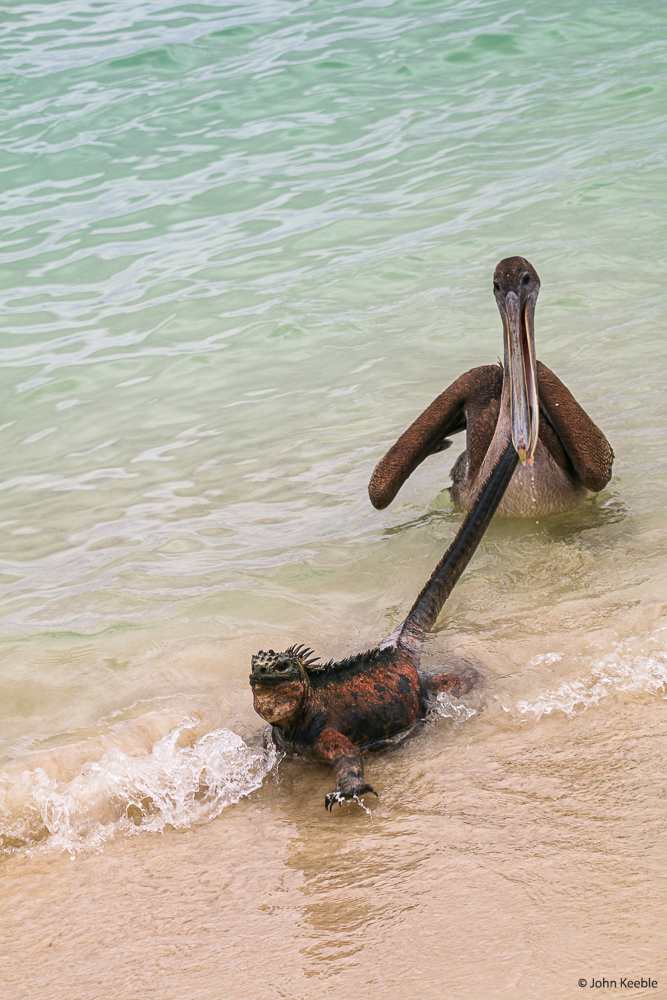
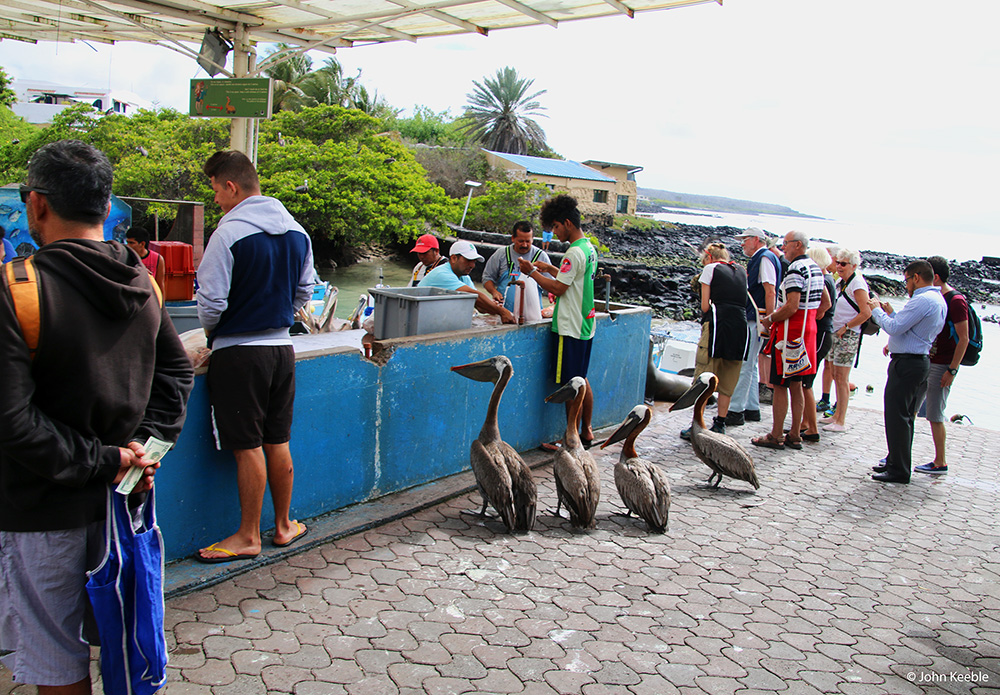
Out of 29 species of cormorants, the Galápagos flightless cormorant, which is endemic to the islands, is the heaviest and the only species that cannot fly. In 2019 there were about 1,000 breeding pairs on Isabela and Fernandina Islands. Except for all species of penguins, the flightless cormorant is the only flightless marine fowl since the Great Awk of the Northern Atlantic became extinct.

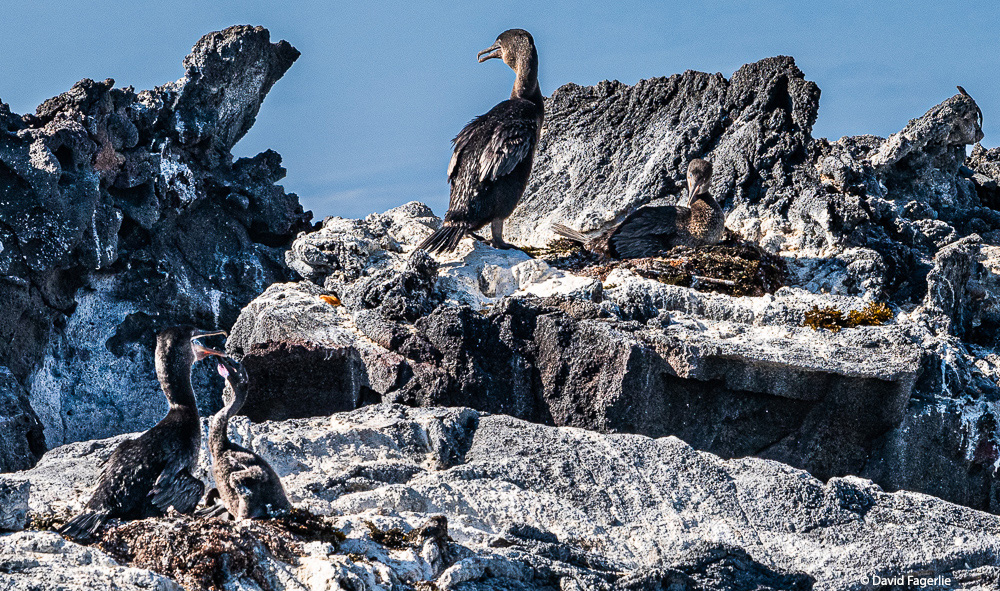

The American oystercatcher is not rare. I enjoyed their colorful eyes and beaks. What is it with standing on one leg?

“The yellow-crowned night heron eats mainly crustaceans (crabs and crayfish) as well as insects, some fish or worms. It can also feed on lizards, small rodents and small birds.
When hunting crayfish, the heron stands at the entrance of the burrow, always facing the sun so its shadow is not cast over the entrance of the burrow, which would alert the crawfish. It can also choose an alternate pattern of walking slowly towards prey with its body bent and its head retracted, then standing and waiting before walking slowly again, sneaking up effectively on unsuspecting crabs. … Once close enough, it lunges with its bill. Small prey are swallowed whole while larger prey (for example, a large crab), it will try to dismember in order to eat the body first and the legs last, or to jab it straight through the body. It will also carry crabs, mollusks or fish away from the water to prevent them from escaping.” – Wikipedia
The yellow-crowned night heron is among the smartest of all birds.
When I was photographing this heron his posture suddenly changed. He saw something? The first image shows you the domain of the heron. Note the difference between my second and third shot, not only his posture but the focus of his eye.



The Galápagos penguin is endemic to the Galápagos Islands and the only penguin found north of the equator. They eat small schooling fish. Galápagos penguins are monogamous, pairing with one other penguin for life. Because of their small size, these penguins are subject to many predators including seals and, on land, Galápagos hawks such as the one pictured below.




The Galápagos mockingbird is one of four mockingbird species endemic to the islands. They are omnivores, eating seeds, invertebrates, eggs and even baby turtles. It is believed that their alarm call is understood by marine iguanas that act defensively knowing that a predator might be nearby.
The mockingbird was the only species that grabbed Darwin's attention. Since the Galápagos species of mockingbirds had not yet been identified, Darwin assumed they were similar to mockingbirds elsewhere. However, when Darwin was stuffing and labeling the birds he had collected on three islands he realized they could be different species. Darwin never made it to Española Island where he would have encountered a fourth species.



There are many species of finches in the Galápagos. The medium ground finch was the species that I noted in an earlier chapter that was observed evolving in the span of one year.
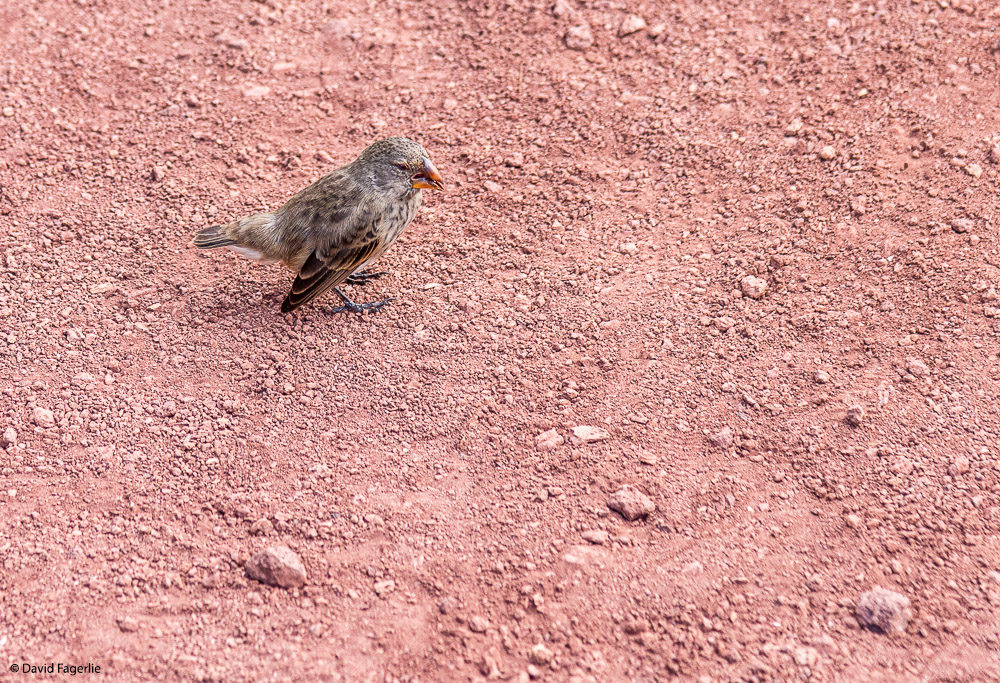
Frigatebirds: The first two photos are of Great Frigatebirds. The two in flight are frigatebirds; but, I cannot tell which species from the undersides.
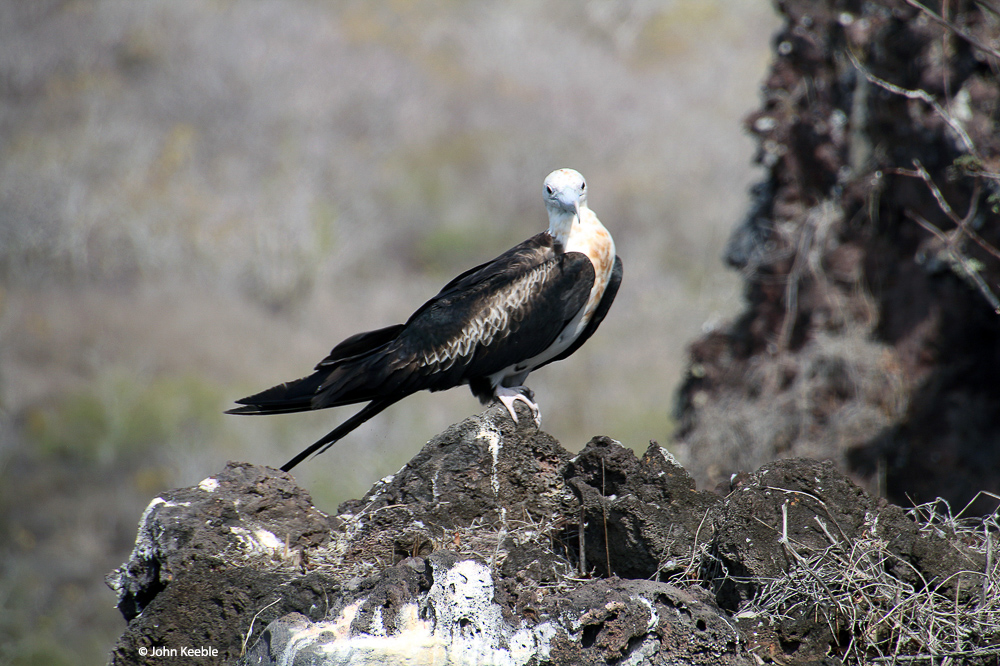
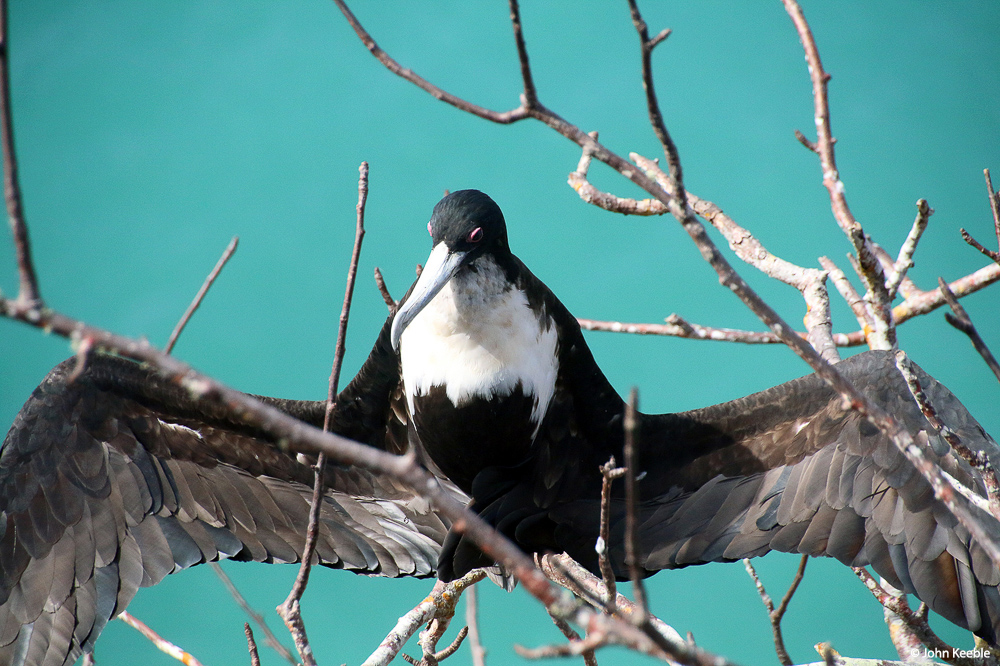


Perhaps the most iconic bird in the Galápagos is the blue-footed booby. There are many in the islands; but, they are common up-and-down Ecuador’s coast. In fact, blue-footed boobies are found along the Pacific coast from California to Peru. Males use their bright blue feet in mating rituals. An ability these birds enjoy, that many other birds do not, is that their eyes are positioned to allow excellent binocular vision.
“The blue color of the blue-footed booby's webbed feet comes from carotenoid pigments obtained from its diet of fresh fish. Carotenoids act as antioxidants and stimulants for the blue-footed booby's immune function, suggesting that carotenoid pigmentation is an indicator of an individual's immunological state.” – Wikipedia


We wandered over to the Finch Bay Hotel in Puerto Ayora for drinks and dinner. While enjoying the hotel from a sitting area near the hotel’s swimming pool there arrived a surprising visitor, a great blue heron, that did not seem to surprise the humans hanging out at poolside.
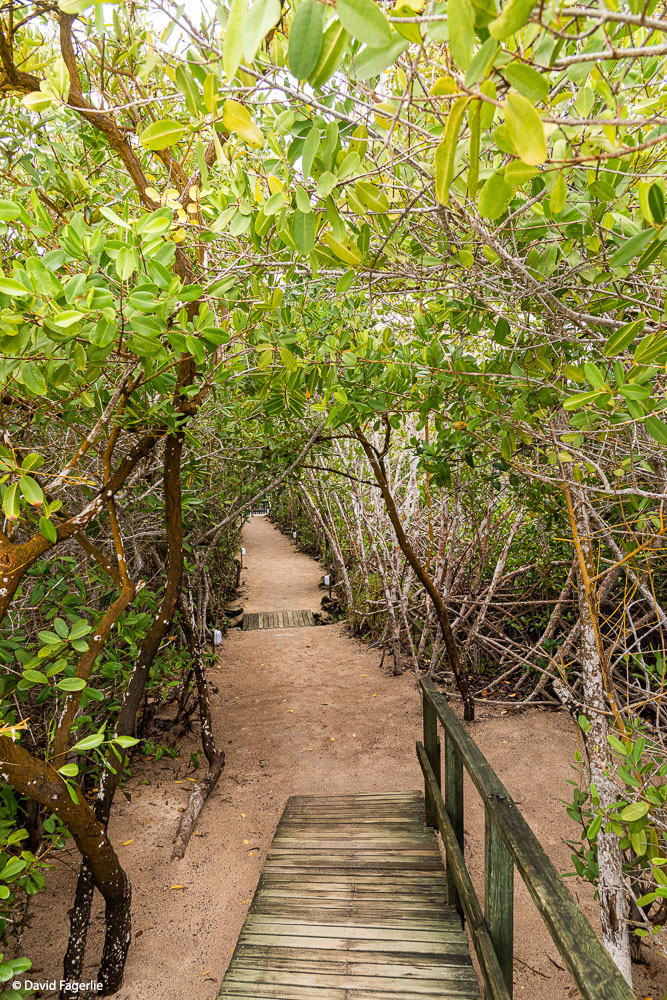



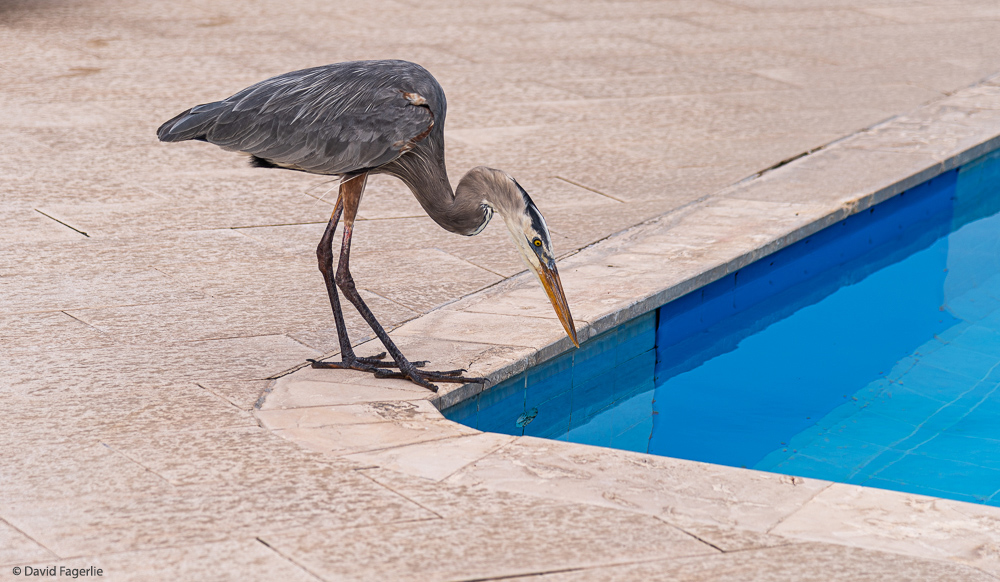
Higher resolution images are available in Galleries. To access the gallery for this chapter directly click HERE.
Next week we move east, crossing the big water to the mainland and uphill just a little.
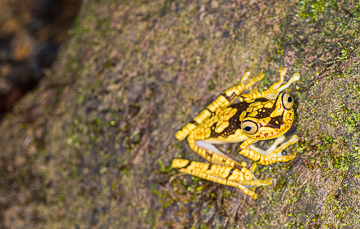
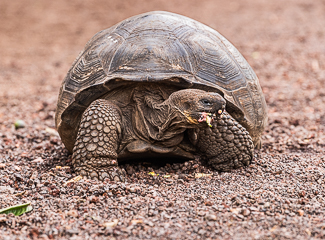
April 26, 2021
Chapter 1: Mashpi Reserve
Ecuador is 109,483 square miles in size – less than half the size of France.